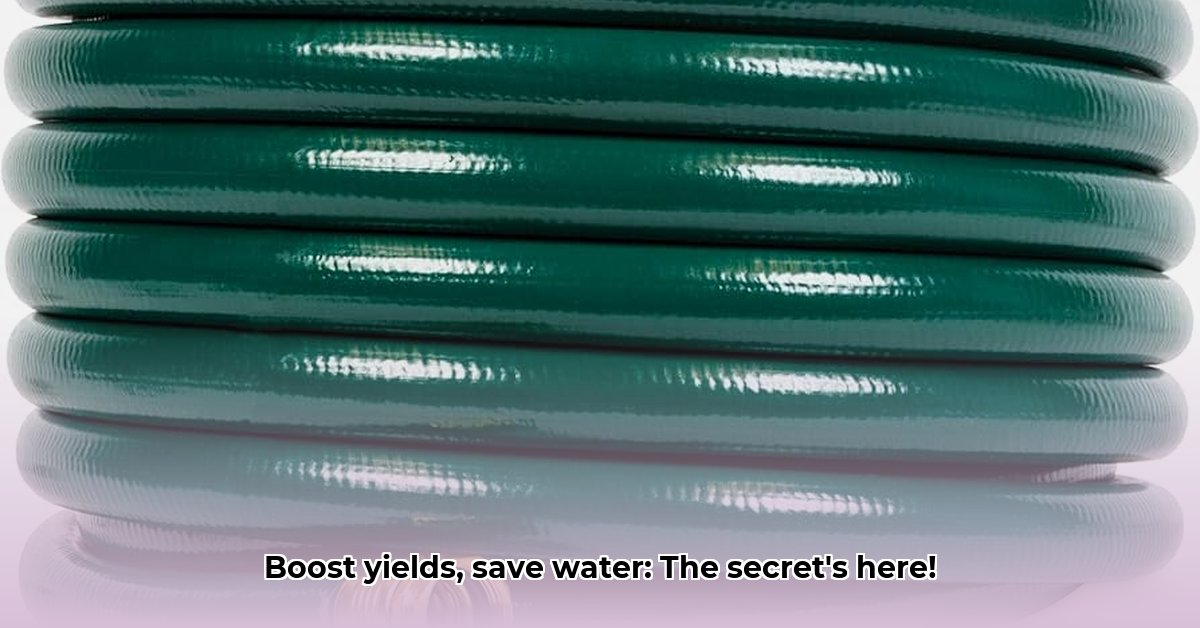
Garden Hoses for Sustainable Agriculture: A Practical Guide
Smart irrigation is crucial for sustainable farming. This guide focuses on selecting and using garden hoses effectively to conserve water and boost yields. We'll explore different irrigation methods, hose materials, installation practices, and broader water management strategies. For additional water storage solutions, check out these metal water troughs.
Understanding Irrigation Efficiency
Efficient irrigation maximizes water use. Different methods suit various crops and conditions:
Drip Irrigation: Delivers water directly to plant roots, minimizing evaporation and runoff. Ideal for many crops, especially those sensitive to overwatering. Think of it as targeted hydration.
Micro-sprinklers: Gently sprays water overhead, suitable for seedlings or crops needing even moisture distribution. This approach works well for delicate plants.
Flood Irrigation: While simpler, it often leads to substantial water waste through evaporation and runoff. Generally considered less efficient than drip or micro-sprinkler systems.
The optimal method depends on crop type, soil type (sandy soil drains faster than clay), and budget. Some methods require higher initial investment but deliver substantial long-term savings through reduced water consumption.
Choosing the Right Hose at Tractor Supply
Tractor Supply offers various hoses; consider these factors:
Durability: A hose needs to withstand daily farm use, including bending, dragging, and sun exposure. A durable hose lasts longer and reduces replacement costs.
Material: Different materials offer varying UV resistance and chemical resistance, crucial for farm settings. Some materials are more likely to leach chemicals over time.
Cost vs. Longevity: While an inexpensive hose might seem attractive initially, frequent replacements increase long-term costs and environmental impact. Prioritize a durable hose for greater long-term savings.
Here's a comparison of common hose materials:
| Hose Material | Advantages | Disadvantages | Sustainability |
|---|---|---|---|
| Rubber | Very durable, resists kinking, long lifespan | Heavier, less flexible, higher initial cost | High |
| PVC | Affordable, lightweight | Prone to kinking, less durable, may leach chemicals | Low |
| Reinforced Rubber/PVC | Combines durability and flexibility | More expensive than basic PVC | Moderate |
The best material depends on priorities: rubber for durability, PVC for affordability (with the caveat of potential leaching and shorter lifespan).
Installation and Maintenance: Maximizing Efficiency
Proper installation is key to preventing water waste:
Planning: Carefully plan your system's layout. Consider water pressure, hose length, and sprinkler/emitter placement for even coverage.
Connections: Use appropriate fittings to ensure secure, leak-free connections. Leaks waste significant water over time.
Burial (If Necessary): For permanent installations, consider burying hoses to protect them from damage and reduce evaporation.
Regular Inspection: Regularly check for leaks and promptly repair any damage. Even small leaks can lead to substantial water waste.
Long-Term Water Management Strategies: A Holistic Approach
Optimizing water use goes beyond hose selection. Consider:
Rainwater Harvesting: Collect rainwater for irrigation, reducing reliance on municipal supplies. This is a highly effective way to conserve.
Soil Moisture Monitoring: Use soil moisture sensors to avoid overwatering. Overwatering leaches nutrients and can harm plants.
Improved Soil Health: Healthy soil with good structure retains moisture more efficiently, reducing the need for frequent watering.
Efficient water management is an ongoing process of learning and adaptation. By implementing these strategies, you conserve water, improve crop yields, and contribute to a sustainable agricultural future. Water conservation isn't just environmentally responsible—it's financially smart as well.
Key Takeaways:
- Wise hose selection significantly impacts water conservation and profitability.
- Durable, non-toxic materials avoid chemical leaching and extend hose life.
- Proper installation and maintenance prevent leaks and save money.
- Explore water-efficient irrigation methods (drip, micro-sprinklers) to optimize water use.
- Implement broader water management strategies (rainwater harvesting, soil moisture monitoring) for holistic water conservation.